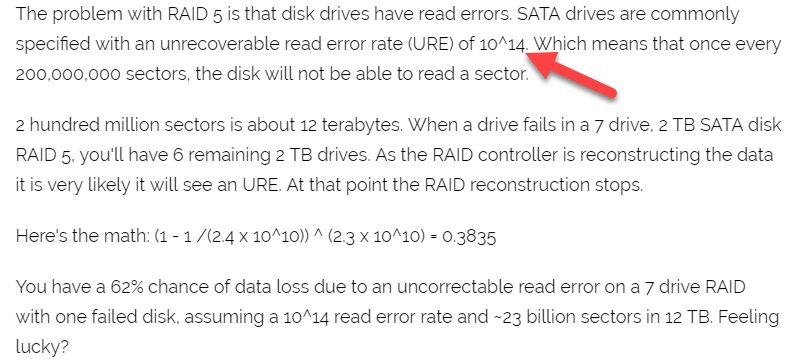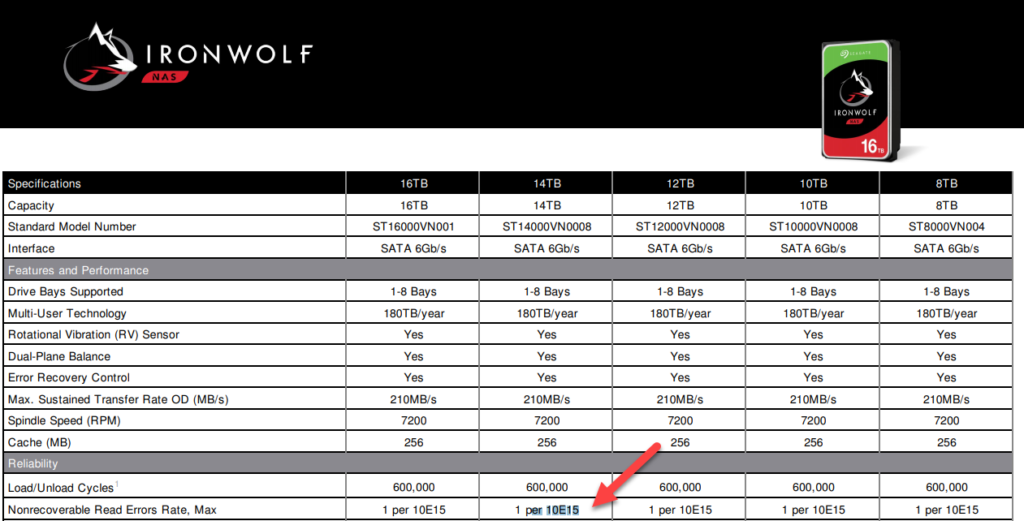RAID5 and RAID6 still work. Google “RAID5” and you’ll quickly find articles that warn you never to use it. The claim is RAID5 won’t protect your data and is doomed to failure. People even claim RAID6 (which protects against 2 drives failing) is dangerous.
We’re here to tell you that for backup appliances this advice is BUNK.
RAID5 still has a role in the backup industry for 2019 and beyond, despite what Robin Harris and other industry pundits have claimed. One reason is that unrecoverable read error rates (also known as nonrecoverable read errors so URE or NRE) on larger hard drives have moved from one every 10^14 (10 to the 14th power) to one every 10^15. As you can see from the nearby screenshots, Robin Harris’s draconian RAID5 calculation uses 10^14.

This is a calculation error of 10 times using today’s 14TB SATA drives. This article documents how to do the probability calculations. But the bottom line is the probability of a read failure while rebuilding an array with a single 14TB drive can be derived by cutting and pasting the following line:
100*(1-(1-1/(1E15))^(14E12*8))
Put this line into the calculator here and click the equal button: https://web2.0calc.com/
You can see the numbers in the line above specify a 14TB drive (14E12*8) with 1×10^15 (written above as 1E15) NRE/URE but you can adjust the numbers for your situation.
You’ll discover a 10.6% chance of a read failure while you rebuild an array based on 14TB drives. While that is significant, we believe the mathematical model doesn’t represent the real world. This is partially because the NRE/URE is higher than 10^15 since engineers have to be conservative in their specifications. The failure rates are very overstated compared to what we experience in the real world. Even at 10.6% it’s much better than the 100% chance of failure if you lose a single stand alone drive. The convenience and manageability of being able to build one large volume for your backup instead of having it scattered on many drives outweighs the unlikely chance of a failure during rebuild. We calculate rebuild times on 50TB to 70TB arrays using our latest hardware controller is around 2 days. RAID5 rebuilds at about 1.5TB/hr while RAID6 rebuilds closer to 1.1TB/hr. While the array is rebuilding, it’s best to have a quiet system (not in use). While this may be impractical for a primary server, it is not unreasonable during the recovery of a backup device. Having said this, it’s still important to off-site your backup and use the 3-2-1 rule for additional protection.
Conclusion: RAID5 and RAID6 have a rational place in protection against drive failures in modern backup appliances. While it is true RAID 10 is better for primary servers, don’t be afraid to use these valuable data protection systems for your backup strategy.


